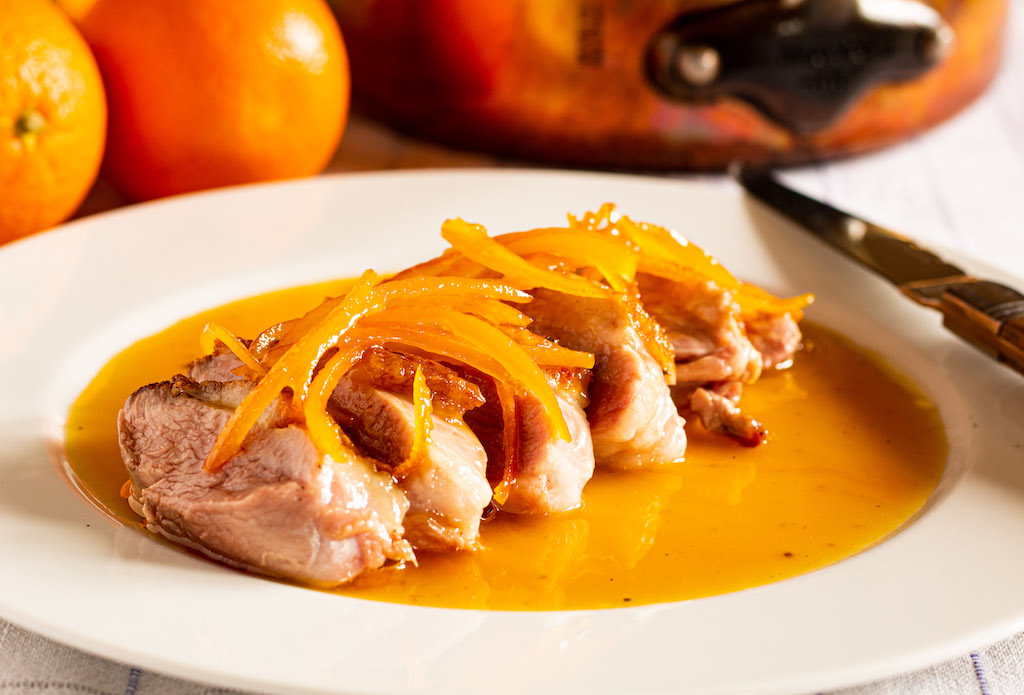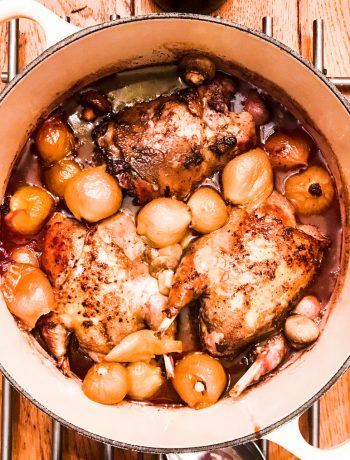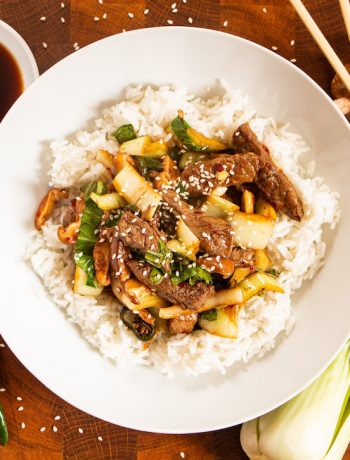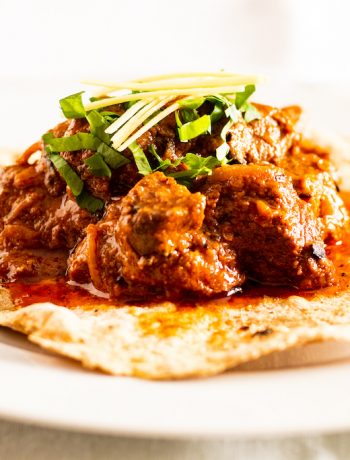There are some food combinations that have endured for as long as we can remember; strawberries and cream, pork and apple. Duck with oranges is one of these. It would be natural to assume that the dish first appeared on the dinner tables of 18th Century French high society, only to be subsequently lost in the culinary annals, before being resurrected in the 1960’s, between the prawn cocktail and the sherry trifle. Unfortunately this was more abomination than resurrection, involving tinned orange segments, cartons of concentrated orange juice and marmalade.
However, it is not quite as simple as a first glance suggests. One theory is that it actually has its roots, not in France, but in Medieval Italy, in Naples; finding its way to France as a result of the marriage between Henry II (Henry Plantagenet) and Catherine De’ Medici. The italian poet Antonio Cacciatore captures this journey in his poem Anatra All’Arancia, which translates directly to ‘duck in orange sauce.’ There are food historians whose theories go further afield, outside of central Europe, placing the origins of the dish in the Middle East, where the combination of meat and fruit was very common at the time, and still is today.

I made the mistake of turning to Escoffier’s Le Guide Culinaire as my first point of reference, only to be overwhelmed by the scope of traditional French recipes for duck, not to mention the different regional classifications of the birds: Nantes, Rouen or wild; even before you decide how you are going to cook it. Rouen tend to be roasted, whilst Nantes are similar to Aylesbury, but are less plump than a Rouen and are usually braised, and so on, and so on. Oh, and Rouen ducks are killed by suffocation, not bleeding. You get the level of complexity we are dealing with here. I was also reliably informed that caneton braisé à l’orange is not to be confused with roast duck served with oranges aka ‘canard à l’orange.’
So, in pursuit of some clarity I turned to Larousse. While the classification of different ducks and methods of cooking them are along similar lines in both reference books, the variation that I have described below best approximates to Larousse’s ‘duck à l’orange Lassere’ with some modifications to the sauce, and the use of duck breast fillets as opposed to a whole roast duck.
It is often said that people may be put off the thought of roasting a duck, and that if you can roast a chicken you can roast a duck. I feel that this statement is missing the point a bit with regards to entertaining or feeding a family; it is not the cooking that is the problem, it is the relative lack of meat, apart from on the breasts. Therefore, I prefer to use duck breasts. That way nobody feels hard done by.
Canard à l'orange
Ingredients
- 1 tbsp clarified butter
- 4 duck breasts
- 2 large oranges
- 1 tbsp white wine vinegar
- 1 heaped tbsp sugar
- 50ml Grand Marnier
- 25g unsalted butter, cubed
Instructions
Heat the clarified butter in a large cast iron skillet or frying pan with a metal handle. The duck breasts will render a large amount of fat, but use of a small amount of butter will stop them from catching when you first place them in the pan. Butter lends a nice golden colour to the skin, and the use of clarified butter means that there are no milk solids to burn, which leave black spots all over the duck. Place the pan on a medium to high heat, and once up to temperature; hot but not smoking, place the duck breasts in skin down. Agitating the pan occasionally to ensure even colouration, cook for about 10 minutes until the skin is an even dark golden brown. Turn the breasts over and place the pan in a pre-heated oven at about 200ºC. Approximately 10 minutes will cook them a nice pink medium rare. This can be verified using a temperature probe which should be between 52ºC and 60ºC.
Remove from the pan and leave to rest, covered with a double layer of foil and a thick cloth, to keep warm while you make the sauce.
Peel the zest of the oranges into julienne strips and set aside, then squeeze the juice from the oranges. Skim the fat from the pan and deglaze with the vinegar then add the sugar. Bring to the boil and allow it to caramelise slightly. This will happen quite quickly due to the high temperature of the pan. Pour in the juice from the oranges, followed by the zest julienne. The sauce will begin to thicken. While this is happening pour in the Grand Marnier. Once the alcohol has boiled off, after a few seconds, whisk in the butter a cube at a time to finish the sauce to a thick glossy consistency.
Season with salt. Slice each breast into 1cm pieces, arrange on the plate with a generous quantity of sauce on top.
Notes
Wine pairing: the classic pairing is Pinot Noir, which has the sharpness and acidity to cut through the fat but with sufficient fruit notes to complement the rich flavour of the meat. Go vintage Burgundy or New World, the choice is yours. If you prefer white, choose a German Spätlese or a Reisling.






1 Comment
Owen Britz
30/08/2021 at 4:47 pmI am so happy that I came across your website. Love French cooking and looking forward to making the canard a l’orange this evening. Definitely going to try more of your recipes.